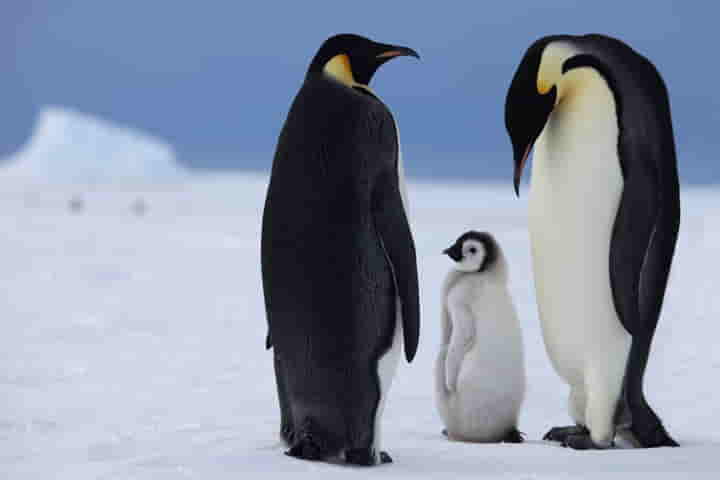Standing at nearly four feet in height in the all-white environs of ice sheets, the Emperor Penguins seem to be the monarchs of all they survey! Yet, these flightless birds face imminent danger of extinction from climate change.
According to an article in smithsonianmag.com, a study published this week in the journal Global Change Biology, discloses an alarming estimate that states that 98 per cent of colonies of emperor penguin will become quasi-extinct by 2100 in case the emission of greenhouse gases continues at the present rate.
Explaining the meaning of quasi-extinct, Rachel Pannett of the Washington Post said, it means that some individuals may survive but their population will be so low that they are destined to be doomed. By 2050, that is 30 years from now, it is predicted by this study that 70 per cent of the colonies will be quasi-extinct. This can be stopped only if greenhouse gas emissions are curbed.
Also read: Scientists discover that sharks had pre-dated Nikola Tesla’s one directional valve
Taking cognisance of this, the United States Fish and Wildlife Service (USFWS) announced on August 3 (Tuesday) its proposal to list the emperor penguin under the Endangered Species Act, as per a report by Catrin Einhorn for the New York Times.
In a statement Martha Williams, Principal Deputy Director of USFWS said: “Climate change, a priority challenge for this Administration, impacts a variety of species throughout the world. The decisions made by policymakers today and during the next few decades will determine the fate of the emperor penguin.”

Going by the satellite images received recently, the emperor penguin numbers in the world are estimated between 531,000 and 557,000. What these birds survive includes the most extreme conditions on Earth. In their colonies, huddled together on the Antarctic, they are blasted by winds that at times can reach 90 miles per hour and face temperatures of minus 40 degrees Fahrenheit.
Yet these birds, who are tough, have some specific preferences when it comes to sea ice as mentioned in an article published in the Conversation by the authors of the new paper.
The lead study author Stephanie Jenouvrier, who is an ecologist at the Woods Hole Oceanographic Institution wrote: “If there’s too much sea ice, trips to bring food from the ocean become long and arduous, and their chicks may starve. With too little sea ice, the chicks are at risk of drowning.”
Also read: Climate change wiped out mammoths and mastodons and not hunting by early humans says a study
For instance, a particularly low sea ice in 2016 caused the drowning of nearly 10,000 baby emperor penguins from a colony in Antarctica’s Halley Bay, according to the news agency Associated Press. In many parts of the Antarctic Peninsula there has been a decline in sea ice coverage that has exceeded 60 per cent resulting in virtually erasing one emperor penguin colony.
Jenouvrier-led 2019 study suggests that if the Paris Climate Agreement’s target of limiting warming to under 1.5 degrees Celsius (2.7 Fahrenheit) compared to pre-industrial temperatures are achieved, then around 20 per cent of emperor penguin colonies would become quasi-extinct. While writing in the Conversation, Jenouvrier states that the world is definitely not likely to meet that target. Citing estimates from Climate Action Tracker, she suggests that the globe has greater than 97% probability of exceeding the Paris Agreement’s secondary target of 2 C (3.6 F) going by the present climate policies adopted by the nations.
With the climate change threat looming large, the listing of these birds under the Endangered Species Act listing could mean important consequences.
Also read: Rodents too help their near & dear ones just like humans
Sarah Uhlemann, International Program Director at the Center for Biological Diversity sharing her views with The Times said: “The hope is that, with these added protections, approvals of U.S. fossil fuel projects will have to weigh harms to penguins and their Antarctic habitat, ultimately reducing heat-trapping pollution worldwide.”




















